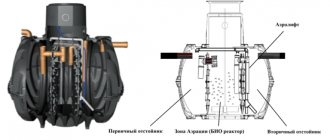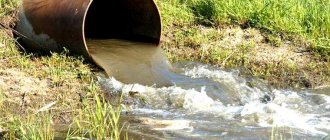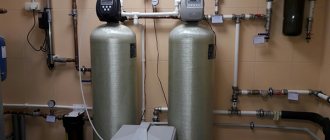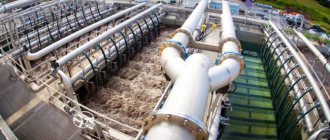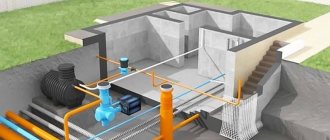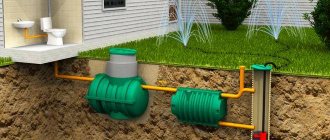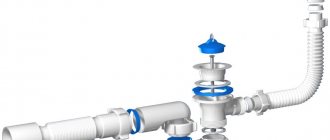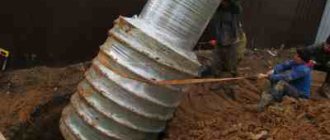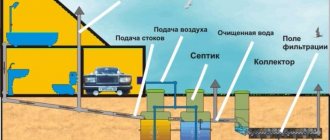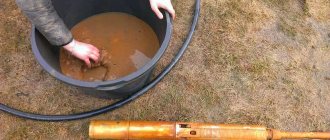Wastewater is water contaminated with various industrial wastes, for the removal of which special sewer systems are equipped from the territory of populated areas and industrial enterprises.
This article will talk about what kinds of wastewater there are, what measures are taken to protect water bodies from pollution by wastewater, and what methods of wastewater treatment exist.
In addition to waste generated as a result of the activities of the population and enterprises, wastewater also includes water, the formation of which was the result of various atmospheric precipitations on the territory of industrial facilities and populated areas.
Various organic substances contained in wastewater, when released into water bodies, begin to rot and cause a deterioration in the sanitary condition of both the water bodies themselves and the surrounding air, and also become sources of the spread of pathogenic bacteria.
Therefore, the most important issues of environmental protection are water disposal and wastewater treatment, which helps prevent harm to public health and the ecological situation of populated areas.
Physical methods of wastewater treatment. Straining, settling, filtering.
Based on filtration methods. Allows you to separate insoluble solid impurities from the liquid phase. This method can be used separately, as well as as the first stage of multi-level cleaning. Mechanical wastewater treatment purifies household liquids from suspended particles by 62-67%, and from insoluble coarse elements by 91-96%.
Straining. The main devices are various gratings and sieves for retaining large elements and a certain amount of suspended particles.
Advocacy. A method for separating suspended particles with higher or lower density from wastewater. For mechanical cleaning using this method, special facilities are equipped - settling tanks. Settling is most often used to improve water in a closed water supply system. Therefore, this method is actively used in the chemical, ore and metallurgical industries.
Filtration. It is actively used to purify water from the smallest particles of various natures. The main device is filters. Wastewater, passing through the filter material, leaves all unnecessary suspensions in it.
Different businesses require different types of filters. Thus, mesh and vacuum filters are widely used in the paper industry. For more active cleaning, centrifuges and hydrocyclones are suitable. The latter are conical vessels made of iron, on the walls of which heavy particles accumulate under the influence of centrifugal force.
Sewerage
All wastewater must be discharged to places where pollution is removed and discharged through sewer networks. Several types of sewers are used depending on the location: industrial, storm and domestic. Household wastewater collection networks can be centralized or autonomous. Sewage systems are divided into two types: internal and external.
Internal networks are considered to be those that are located within a building or structure. They include: house risers, drainage funnels, drainage pipes, internal collection trays, inspection devices and wells. External systems include pipes, wells, treatment facilities, pumping equipment and all other functional objects outside buildings.
External sewerage is divided into three types:
- alloy;
- separate;
- semi-separated.
In a common drainage system, stormwater, economic and domestic liquids are discharged together, through the same technical networks. In a separate system, the products of precipitation and snow melt are removed separately from household liquids. In a semi-separate system, wastewater and sediment are discharged separately, but are combined in a single treatment collector.
Autonomous sewer networks are used to remove wastewater in country houses, dachas, industrial and other facilities where there is no centralized system.
Types of autonomous sewer systems:
- Cesspools.
- Dry toilets.
- Septic tanks.
- Filtration installations.
The centralized sewerage system includes the following components:
- internal devices of the building for drainage;
- external intra-block system;
- outdoor street system;
- pumping and pressure equipment;
- wastewater treatment plants;
- discharge systems into water bodies and soil.
Facilities for mechanical wastewater treatment
Lattices. They retain large elements contained in wastewater. They are installed in the direction of fluid flow. Grilles are metal rods mounted on a metal frame, installed obliquely or vertically. In the grooves of the grate there are movable rake teeth. They are mounted on a hinge-plate chain, which is driven through a gear drive.
The rake removes waste from the metal wall of the grate and lifts it onto a moving belt. Next, the suspended particles are sent to a special crusher for crushing.
There are also crusher grates that retain solid elements and simultaneously grind them. This installation is installed in a chamber with circular movement of wastewater. The electric motor drives the crusher drum through a gearbox. It traps the waste contained in the wastewater and transfers it to the cutting combs. The latter grind solid elements, which, after such treatment, return to the wastewater.
Sand traps. Retains mineral impurities. The specific gravity of the particles is greater than the specific gravity of water. Therefore, as the liquid moves in the tank, mineral elements fall to the bottom. The operation of sand traps depends on the speed of water movement. Typically, installations are designed to retain particles larger than 0.25 mm. The settling of smaller mineral contaminants is extremely undesirable. For this reason, the speed of water movement is important.
The optimal speed for horizontal current is from 0.15 to 0.3 m/s. Horizontal installations are installed where wastewater moves horizontally, linearly or in a circle. Such sand traps consist of two main elements:
- the worker through whom the flow moves;
- sedimentary, which collects and stores fallen sand.
Methods for cleaning sand traps:
- pump (with low wastewater flow);
- hydraulic elevator, augers, scrapers, etc. (at special treatment plants).
Sand traps are capable of retaining up to 75% of mineral impurities contained in wastewater.
Septic tanks. Used to separate mechanical impurities from wastewater. There are several types of settling tanks.
By purpose:
- primary (installed in front of biological treatment stations);
- secondary (installed after biological treatment facilities).
By design features:
- horizontal;
- vertical;
- radial (a type of horizontal settling tanks).
Silt sites. They are used for drying wet sludge discharged from settling tanks, digesters and other similar structures (at the outlet of them the sludge has a moisture content of up to 97%). The sludge platform dries to a moisture content of 75% (average value). As a result, the volume of waste is reduced by 3-8 times.
A silt pad is a piece of land surrounded by earthen rolls. The sediment is poured in layers. Some of the liquid evaporates, and some falls into the ground. The dried sludge is loaded onto trucks and transported away. Sludge water is pumped to treatment plants.
The main facilities for mechanical wastewater treatment are listed. Depending on the type of activity, the amount of wastewater, and the type of pollution, the enterprise may use other installations.
Possible problems and consequences of poor cleansing
The requirements for cleaning CBS are becoming stricter every year. As the volumes of waste fluid from human activities and production processes increase, the level of pollution also increases significantly. This negatively affects people's quality of life.
Inappropriate installation of treatment facilities leads to a number of negative consequences . Household wastewater ends up in water bodies, where the percentage of oxygen content decreases due to pollution. This leads to the proliferation of microorganisms, which negatively affects flora and fauna.
Important! With an abundance of organic substances in such water it becomes dangerous even to swim.
Chemical wastewater treatment
Based on the reactions of wastewater components with reagents. Most often, chemical methods are used to normalize the pH of wastewater or to precipitate insoluble salts and hydroxides of heavy metals formed as a result of the reaction. When used as reagents, peroxide compounds or compounds containing active chlorine (for example, ozone and hypochlorite) achieve disinfection and clarification of wastewater due to the oxidation of organic impurities. During the chemical treatment process, a fairly large amount of sediment can accumulate, but if sediment formation does not occur, the salinity content of the wastewater increases.
Reagents used during chemical cleaning:
- potassium permanganate;
- chlorine;
- sodium hydroxide;
- ozone;
- lime;
- hydrochloric and sulfuric acids.
Very often, chemical water treatment is carried out as a preliminary step before the biological stage.
The following chemical cleaning methods are available:
Neutralization. Polluted water must be purified to a pH value of 6.5 to 8.5. Such purified waters will be neutral. The process is carried out using several methods, such as: mixing alkaline and acidic wastewater, adding various reagents, filtering acidic water with the addition of neutralizing substances. The absorption of ammonia by acidic waters and the dissolution of gases by alkaline waters are also used. Occasionally, neutralization reactions may produce a precipitate. To neutralize acidic waters, the following substances are used: cement, dolomite, ammonia water, and calcium hydroxide is the most optimal and accessible reagent for this process, Ca(OH)2, which contains 5-10% active lime.
Industrial waters often contain sulfuric acid. To neutralize it, alkaline compounds are used, the composition of which may vary depending on the concentration of the acid. For alkaline waters, on the contrary, processes are used to treat them with various acids or acidic gases.
Oxidation. Oxidation is mainly used for wastewater disinfection. The resulting water becomes significantly less contaminated and pollutants and toxins are removed. The most common and suitable is chlorine. It is often used in detergents and disinfectants. Actively removes phenols, cyanides, hydrogen sulfide, sulfides and sulfur compounds. This produces hydrochloric acid. Once oxidized to cyanate, it is oxidized to the simple elements nitrogen and carbon dioxide.
Another effective oxidizing agent is ozone. It is capable of oxidizing both organic and inorganic substances. Actively fights petroleum products, arsenic, pesticides, phenols, surfactants and others. Ozone decolorizes water, eliminates tastes and odors, and normalizes organoleptic properties. Unlike chlorine, disinfection with ozone proceeds hundreds of times faster.
Ultraviolet irradiation is used for final disinfection. It can be used independently in separate installations or together in the process of disinfection with chlorine or ozone.
There is another oxidation method that is actively used in wastewater treatment. Main processes: cathodic reduction and anodic oxidation. Depending on the need to extract various elements from wastewater, the materials of the electrodes and the type of electrolyte change.
Norms
Strict cleaning requirements apply only to industrial areas . At the same time, the standards indicate specific permissible concentrations of various chemicals regarding sources of non-industrial origin. Their discharge into soil or open water bodies without treatment is not permitted.
For household wastewater discharged into water bodies, regulatory requirements for content and concentrations apply.
Generally accepted standards are specified in SanPiN No. 4630–88:
- The pH value should be between 7.4-7.8.
- The average phosphate content is 0.95 mg/dm3.
- Sulfate content – 28.5 mg/dm3.
- Chloride content – 62 mg/dm3.
Important! It is prohibited to discharge untreated sewer water into water bodies. Failure to follow this rule results in administrative liability.
Biological wastewater treatment
The purpose of the biological stage of treatment is the destruction and mineralization of organic wastewater residues by microorganisms or bacteria. This method is based on their ability to use substances from wastewater in their diet. In practice, anaerobic (anaerobic fermentation) and aerobic organisms are used. These processes are similar, but three main ones are used in industry: biofilters, activated sludge (aeration tanks), and digesters. Activated sludge microorganisms maintain the state and structure of their biocenosis by multiplying and consuming pollutants.
The essence of the process
The most dangerous wastewater is considered to be from industrial laundries.
They contain detergents (with a predominance of surfactants). The HBS also includes:
- various microorganisms;
- minerals (for example, clay and sand);
- solid waste.
Before being discharged into a reservoir, they undergo mandatory cleaning. Domestic wastewater is discharged into the sewerage system, which directs it to special structures. This is necessary to eliminate harmful and dangerous chemical elements.
Types of contaminants in wastewater
Wastewater is classified according to the types of pollution, they are:
- Mechanical. These are impurities and debris undissolved in water; such contaminants contain surface wastewater.
Advice! Storm or surface wastewater discharged from the territory of industrial enterprises may contain not only mechanical, but also chemical impurities.
- Chemical. This type of pollution includes wastewater with the presence of dissolved or suspended organic or inorganic chemicals. Chemical contaminants may or may not be toxic.
- Biological. This type of pollution implies the presence of various bacteria, fungi and other pathogenic microorganisms in the water.
- Radioactive. This is wastewater contamination with radioactive substances.
